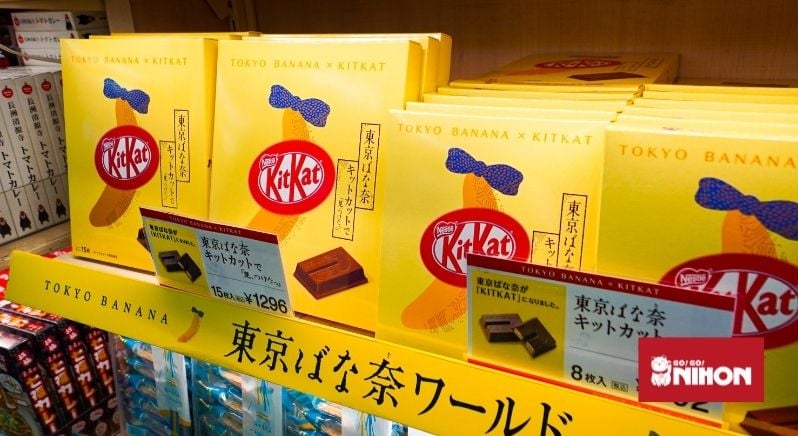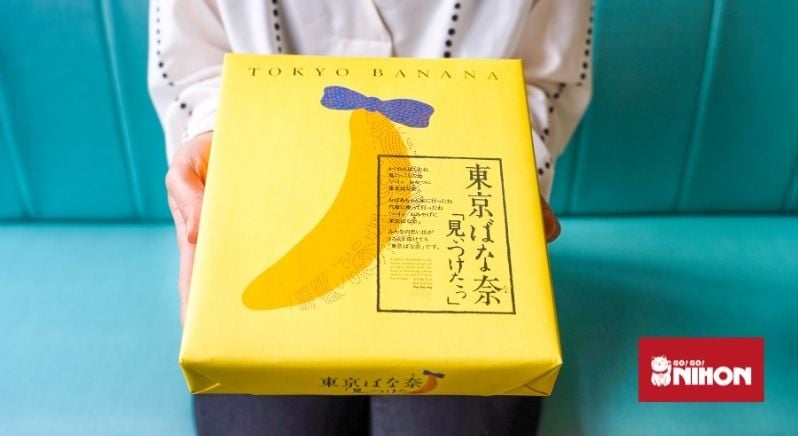The word omiyage お土産 translates to “souvenir”, but the practice of giving omiyage in Japan is much more nuanced than your typical western ideas of what a souvenir is.
Giving omiyage is deeply ingrained in Japanese society – to the point where it’s sometimes frowned upon to return from a trip without gifts in hand.
Read on to learn all about Japan’s unique gift-giving culture and what some of the best omiyage are to buy for your colleagues and loved ones.

What constitutes omiyage?
While the word “omiyage” translates to “souvenir” in English, the concept of omiyage is different in that it’s a gift that you buy for others, rather than yourself. Specifically, it’s a gift that you buy for your work colleagues, family and friends after returning from a trip.
And while souvenirs in the west usually consist of things like keyrings, clothing and ornaments, omiyage is usually edible. Typically, they are sweet items like cookies, cake and candy, but can also be savoury rice crackers, alcohol, dried snacks and more.
It’s true that you will find food items that you can buy as a gift in other countries. But the big difference with omiyage in Japan is that the items often represent the place they are from.
This is evident even in the characters that make up the word “omiyage”. 土, which is read tsuchi or dō means “local” and 産, pronounced san, means “produce”.
For example, Wakayama prefecture (located south of Osaka) is a huge producer of mikan 蜜柑, a type of citrus fruit that’s very similar to tangerines. If you visit Wakayama, the omiyage items sold there will feature mikan prominently – from mikan juice, to mikan-flavoured gummy sweets and mikan-inspired cookies.
Another example is if you visit Miyajima 宮島 in Hiroshima, you’ll see lots of places selling little cakes in the shape of a maple leaf that are filled with sweet red bean paste. These are popular here because there is an area on the island that is known for beautiful autumn leaves. One day the mistress of a local ryokan 旅館 (traditional inn) requested a sweet be made to reflect this and so the momiji manjū 紅葉まんじゅう (“momiji” meaning autumn leaves and “manjū” being a traditional Japanese confectionery) was born.
When buying omiyage in Japan, you will always be able to tell what’s sold as omiyage and what isn’t. Normally, omiyage will be nicely wrapped and found in every tourist shop and major transport hubs. Usually items like drinks and bentō boxes aren’t omiyage.

Cultural significance of omiyage in Japan
Giving omiyage in Japan goes back centuries to when people made long journeys to pray at Shinto shrines. They always brought back religious objects for their families and quickly local shopkeepers near the shrines started selling local products as gifts. These gifts were originally called miyage, hence the word “omiyage”. Note the “o お” part of the word is a polite, or honorific, prefix used in formal Japanese.
Nowadays, these gifts play a significant part in maintaining pleasant and harmonious relationships, which is extremely important in Japanese society. Remembering to bring back omiyage is a show of respect, thought and appreciation for those you left behind while you were on your trip.
In a work setting, bringing back omiyage is also a show of gratitude for your colleagues to thank them for covering for you while you were away. It’s also common to take omiyage to business partners, especially when meeting partners that are located far away. It’s a way to show appreciation for the business relationship.
How to choose the perfect omiyage
As mentioned, there will be plenty of places where you can go to buy omiyage and typically, they consist of edible goods. Cookies, sweets, rice crackers, mochi and mini cakes are all very common and popular gift ideas.
Luckily you don’t have to buy one omiyage per person if you’re buying for work colleagues or classmates since most of the products consist of multiple individually packaged items. Just remember to try and get enough for everyone to share.
If you’re on an overseas trip, buy something local to the place you’re visiting. This could include local alcohol, snacks, chocolate, and more.
Curious about other aspects of Japanese culture and traditions? Make sure to follow our blog for more articles.













